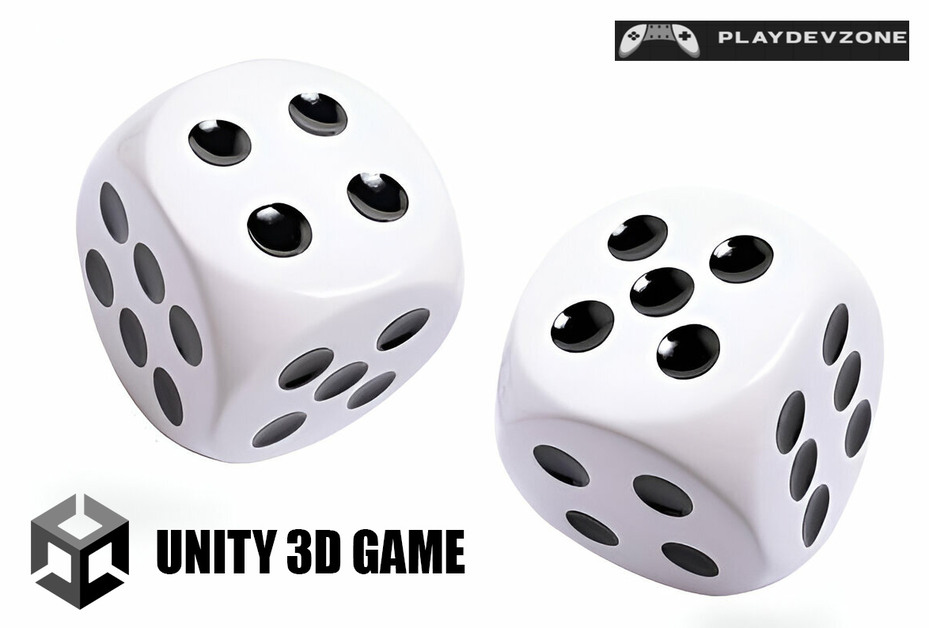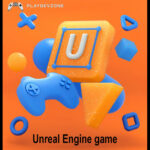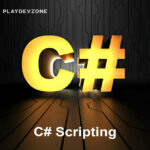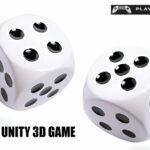If you’ve ever imagined creating your video games with realistic graphics and interactive gameplay, Unity, the world’s leading 3D game engine, is the perfect place to start.
Whether you're an aspiring developer, a student, or just passionate about game design, Unity offers a powerful yet beginner-friendly environment to turn your ideas into playable experiences (3d game engine unity).
Trusted by millions of developers and top gaming studios, Unity provides everything from real-time 3D rendering to cross-platform publishing.
In this beginner’s guide, we’ll walk you through the essential steps to get started with Unity and help you build a strong foundation for your game development journey.
What Is Unity?
Unity is a powerful, cross-platform game engine used by developers worldwide to create 2D, 3D, AR, and VR experiences.
Known for its flexibility and user-friendly interface, Unity enables both beginners and professionals to build interactive games and simulations without needing deep technical knowledge.
Initially launched in 2005, Unity has evolved into one of the most widely adopted game engines in the industry, powering a diverse range of projects, from indie games to AAA titles.
With built-in tools for animation, physics, scripting (using C#), and real-time rendering, Unity makes game development accessible and efficient.
Whether you're building a mobile app, a PC game, or a VR experience, Unity provides the tools to bring your creative vision to life.
Why Choose Unity for Game Development?
Unity is one of the most popular game development platforms, trusted by millions of developers worldwide.
Unity’s intuitive interface and visual tools allow beginners to dive into game development with ease, eliminating the need for advanced programming skills. Its user-friendly design helps newcomers create interactive experiences without facing a steep learning curve.
With powerful scripting in C#, Unity strikes a balance between ease of use and professional-grade capabilities.
One of Unity’s biggest strengths is its extensive community and rich documentation, offering tutorials, forums, and learning resources to support developers at all levels.
Whether you're troubleshooting a bug or learning a new feature, help is always available.
Unity also excels in its cross-platform support, allowing developers to build once and deploy on PC, mobile devices, consoles, and even VR/AR devices.
One of Unity's biggest advantages is its free Unity Personal plan, which provides full access to core features at no cost.
This makes it an ideal, budget-conscious choice for indie developers, students, and hobbyists looking to bring their game ideas to life without upfront investment.
Installing Unity: Step-by-Step Guide
Getting started with Unity is simple when you follow the proper steps. First, download Unity Hub from the official Unity website.
Unity Hub serves as a centralised platform for managing all your Unity installations and projects.
It streamlines the process of installing, updating, and organising different Unity versions, making project management more efficient and user-friendly.
Next, use Unity Hub to install the Unity Editor, along with essential modules such as Android Build Support or WebGL, depending on your target platform.
When selecting a version, it's best to choose a Long-Term Support (LTS) release, as it offers maximum stability and extended updates.
To start scripting in C#, install Visual Studio during the setup process.
It integrates seamlessly with Unity, providing a powerful environment for writing and debugging code.
With Unity Hub, the right editor version, and Visual Studio, you'll be fully equipped to begin your game development journey.
Exploring the Unity Interface
Familiarising yourself with the Unity interface is crucial for smooth game development.
The two primary views you'll work with are the Scene View, where you design your game environment, and the Game View, which displays how your game will appear during play.
The Scene View allows you to design and position objects in your world, while the Game View lets you preview how the game will appear during play mode.
Key panels include the Hierarchy Window, which lists all objects in your scene; the Inspector Window, where you adjust properties and components; and the Project Window, where your assets and scripts are organised.
The Toolbar provides essential controls, such as Play, Pause, and Step, along with navigation tools like Move, Rotate, and Scale.
Beginners should consider customising the layout to suit their workflow, keeping frequently used panels easily accessible.
Mastering Unity’s interface helps streamline development and enhances your productivity from day one.
Creating Your First Unity 3D Project
Starting your first 3D project in Unity is easy with Unity Hub. Simply open Unity Hub and select “New Project,” then choose the 3D template to set up your workspace.
This provides the essential tools to begin building immersive 3D environments.
Once your project is ready, start adding basic 3D objects, such as cubes, planes, and lights, from the GameObject menu.
These elements form the foundation of your scene, helping you design the environment and gameplay space.
Next, adjust the camera to control the player’s view, and fine-tune lighting to enhance mood and realism.
Effective lighting plays a crucial role in enhancing the visual quality and atmosphere of your scene.
Finally, save your scene regularly and organise your assets in folders within the Project window to maintain a smooth and efficient workflow.
Following these steps will help you build a solid foundation for your Unity 3D game development journey.
Unity Scripting Basics with C#
Scripting in Unity is essential for bringing your games to life, and C# is the primary language used. With scripting, you control game behaviour, interactions, and logic.
To begin, write your first simple script, such as moving a character from one location to another. Using C#, you can create a script that responds to player input to move an object smoothly in the scene.
Once your script is ready, attach it to a GameObject by dragging it onto the object in the Hierarchy or Inspector.
This connection enables the script to control the object’s behaviour during gameplay.
Key methods like Start() and Update() are vital: Start() runs once when the game begins, making it perfect for initialising settings, while Update() runs every frame, ideal for continuous actions such as movement.
Grasping these fundamental concepts opens the door to harnessing the full power of Unity for game development.
Importing Assets and Using Materials
Unity makes it easy to enhance your projects by importing assets from various sources.
The Unity Asset Store offers thousands of free and paid 3D models, textures, audio files, and more, helping you quickly build rich game environments.
To import assets, simply download them from the Asset Store or import external files, such as FBX models and PNG textures.
Once imported, you can create and customise materials, which define how surfaces look by controlling colour, texture, and reflectivity.
Applying materials to your 3D objects brings them to life with realistic visuals.
Additionally, understanding prefabs is crucial: Prefabs are reusable GameObject templates that save time by allowing you to duplicate and modify objects consistently across your scenes.
Leveraging assets, materials, and prefabs helps you streamline development while creating visually engaging games that attract players and boost organic traffic.
Playing and Testing Your Game
Testing your game regularly is a vital part of the development process in Unity. By clicking the Play button, you enter Play Mode, where you can interact with your game in real-time and test mechanics, controls, and gameplay features.
Beginners often encounter common issues such as objects not behaving correctly or scripts not running as expected.
These problems usually stem from missing components, incorrect script attachments, or unassigned variables.
To troubleshoot effectively, use the Console window. It displays errors, warnings, and debug messages that help you identify and fix issues quickly.
Adding Debug.Log() statements to your code is a helpful way to track values and behaviours during runtime.
Regular testing and debugging not only improve your game’s performance but also ensure a smoother development experience, boosting quality, user experience, and your game’s potential for success.
Exporting and Building Your Game
Exporting your game in Unity is the final step before sharing it with players worldwide.
Unity supports a wide range of platforms, including PC (Windows/Mac), Android, and WebGL for browser-based gameplay.
This flexibility allows you to publish your game across multiple devices with a single project.
To begin, go to File > Build Settings in Unity. From there, select your target platform and click “Switch Platform.”
Ensure you have the necessary modules installed via Unity Hub for platforms such as Android or WebGL.
After configuring your build settings such as resolution, graphics options, and output path, click Build to generate your playable game.
Running your first build successfully ensures your game is ready for distribution, whether on app stores, browsers, or desktops.
Optimising your build process is essential for delivering a smooth, high-performance experience that attracts users and boosts organic traffic.
Unity Tips & Resources for Beginners
Getting started with Unity is easier when you have the right resources.
One of the best places to start is Unity Learn, the official learning platform, which features step-by-step tutorials, beginner courses, and interactive projects designed to help you build your skills quickly.
In addition to Unity Learn, numerous YouTube channels and online forums, such as the Unity Community, Reddit, and Stack Overflow, offer free, in-depth tutorials, tips, and troubleshooting help from experienced developers.
To stay ahead, always keep an eye on Unity’s latest versions and updates, which bring performance improvements, new features, and better support for modern platforms.
Most importantly, work on small practice projects, such as basic platformers or 3D environments, to apply what you have learned.
Hands-on experience is the fastest way to master Unity and build high-quality games that can succeed on any platform.
FAQ (Frequently Asked Questions)
Is Unity used for 3D games?
Yes, Unity is widely used for creating 3D games that run across multiple platforms, including PC, mobile devices, consoles, and VR/AR devices.
Known for its powerful real-time 3D engine, Unity offers features such as customizable lighting, physics, animations, and C# scripting, making 3D game development efficient and accessible.
Developers use Unity to build everything from indie 3D titles to AAA-quality games.
Its user-friendly interface, vast asset store, and cross-platform support make it a top choice for both beginners and professional game studios worldwide.
Is the Unity 3D engine free?
Yes, the Unity 3D engine is free to use through the Unity Personal plan, which is ideal for beginners, hobbyists, and indie developers.
This free version includes all the essential tools and features needed to create and publish 2D and 3D games across multiple platforms.
Developers can access Unity’s powerful editor, scripting capabilities, and asset store without any upfront cost.
However, if your revenue or funding exceeds a certain threshold, you’ll need to upgrade to a paid plan.
Unity’s free access makes it a top choice for learning and launching projects.
Is Unity good for beginners?
Absolutely, Unity is a great platform for those new to game development.
Its intuitive interface, drag-and-drop functionality, and extensive learning resources make it easy for newcomers to start building games without advanced coding skills.
Unity uses C#, a beginner-friendly programming language, and offers official tutorials through Unity Learn, along with a supportive community and forums.
The free Unity Personal plan allows users to explore all core features at no cost.
Whether you're creating 2D or 3D games, Unity provides a flexible, accessible platform ideal for learning and launching your first projects.
Is Unity free or paid?
Unity provides a range of free and premium plans, ensuring accessibility for developers of all experience levels and project sizes.
The Unity Personal plan is entirely free and includes all the core features needed to create and publish games, ideal for students, hobbyists, and indie developers earning less than $100,000 annually.
For professionals or teams with higher revenue, Unity offers paid plans, including Unity Plus, Pro, and Industry, which provide advanced tools, support, and licensing options.
This flexible pricing structure allows developers to scale their projects while keeping costs manageable, making Unity a popular choice worldwide.
Can I build a full game alone in Unity?
Yes, you can build a whole game alone in Unity. Unity is designed to be user-friendly and offers a wide range of tools that support solo developers, including a visual editor, C# scripting, and an extensive Asset Store filled with ready-to-use models, sounds, and templates.
Whether you're creating a 2D platformer or a 3D adventure game, Unity allows you to handle everything from design and coding to testing and deployment.
With practice, online tutorials, and Unity’s vast community support, many indie developers successfully publish complete games on their own.
Conclusion
In conclusion, Unity stands out as a powerful and versatile 3D game engine that caters to both beginners and professional developers.
Its user-friendly interface, cross-platform capabilities, and robust community support make it an ideal choice for creating high-quality 3D games.
Whether you're building your first indie project or working on a large-scale title, Unity provides the tools and flexibility needed to bring your vision to life.
With continuous updates, free learning resources, and a strong developer ecosystem, Unity remains the top choice for 3D game development in today’s competitive market.











